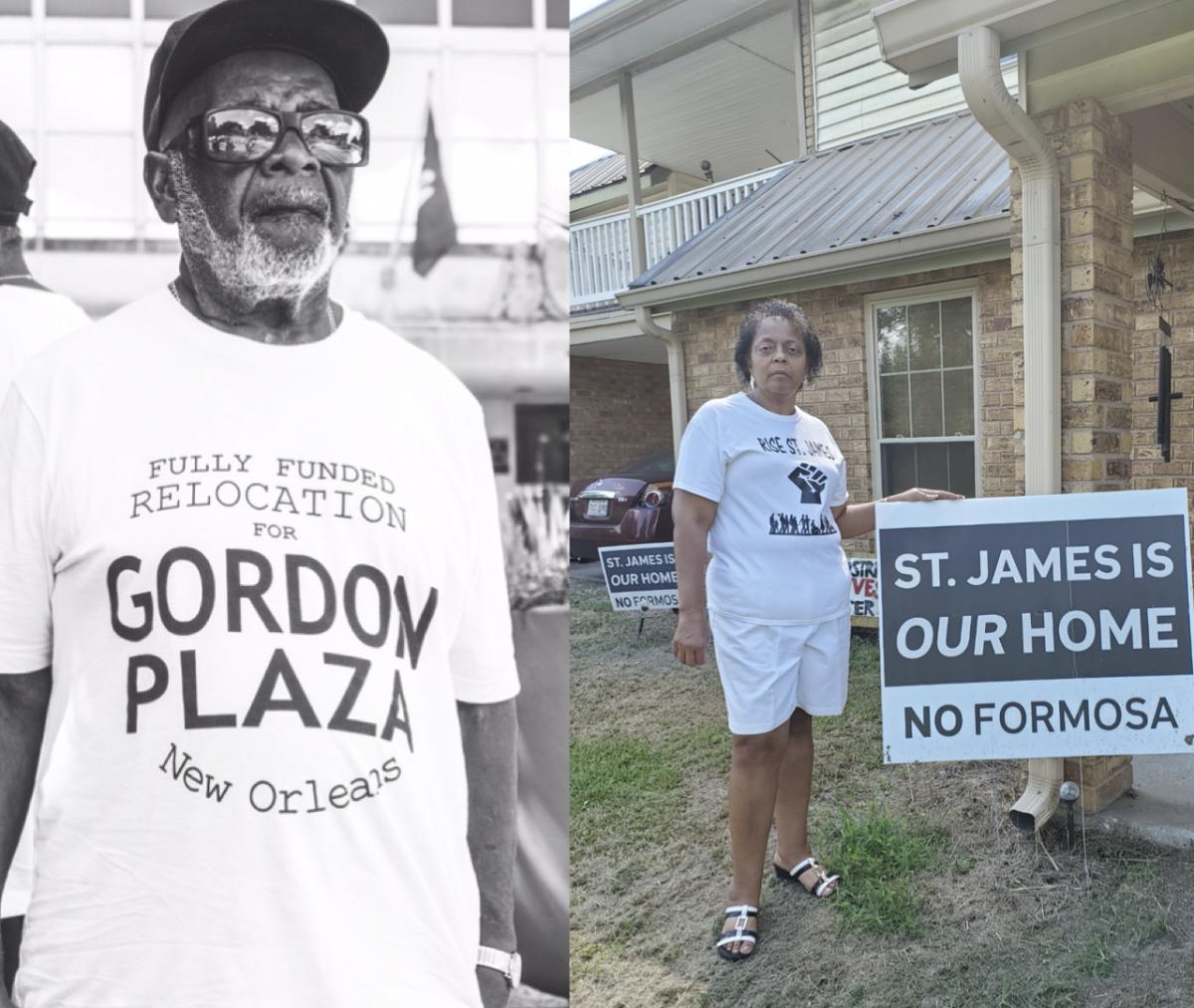EarthX Environmental Justice – New Orleans

By Lauren Zanolli
New Orleans seems to hold more joy, and more sorrow, than its relatively small frame should allow. The city of 390,000 has an outsized place in the American heart and imagination. And if you’ve ever been there, it’s easy to understand why.
The unique traditions of New Orleans, from food to music to Mardi Gras, are undeniably special. In a city that is sixty percent African-American, they’re are also deeply rooted in Black culture. As the local artist Phlegm succinctly puts it, “Everything you love about New Orleans is because of Black people.”
But beneath New Orleans’ sparkle are dark shadows. These too are disproportionately carried by Black residents. From poverty rates, to education and health outcomes, environmental impacts and a distorted criminal justice system, Black residents have consistently fared worse.
Systemic racism and white supremacy are at the root of the city’s environmental justice crises. Racist housing and land use policies pushed people of color into unhealthy environments created by industrial developers, lax regulation and a failure of enforcement. This perfect storm allowed pollution to proliferate, sickening and killing Black communities at higher rates than their white peers. As environmental justice experts have pointed out, even as egregiously racist Jim Crow laws faded, the impacts have remained. “America is still segregated and so is pollution,” said Dr. Robert Bullard, father of environmental justice and leading campaigner against environmental racism.
The fight against these slow-moving environmental disasters never stopped. And in New Orleans, Black women in particular have emerged as tireless frontline leaders, as seen in two of the region’s most prominent crises.
The Issue: Toxic land in Gordon Plaza
Just a few miles from the French Quarter lies Gordon Plaza, home to one of New Orleans’ longest-running environmental justice fights. The city’s housing authority, supported by federal funds, built the subdivision in the 1980s. The entry-level homes were marketed to the city’s up-and-coming Black middle class. Unbeknownst to incoming homeowners, the entire development was built atop a highly toxic landfill that had stored the city’s medical and municipal waste for the first half of the 20th century.
Shortly after Gordon Plaza opened, chemical drums and other toxic fossils popped out of front lawns. Incidences of cancer began to spread amongst residents. The area was eventually declared a Superfund site in 1994, and EPA testing found 150 contaminants in the soil, including 49 known carcinogens. In 2019, the Louisiana Tumor Registry found the area has the second-highest rate of cancer in Louisiana.
Making an Impact: Shannon Rainey and the residents of Gordon Plaza
Unable to move or sell their homes, Gordon Plaza residents have been fighting for a fully-funded relocation off their toxic land for nearly three decades. Longtime Gordon Plaza resident Shannon Rainey has been leading that fight as the founder of Residents of Gordon Plaza, Inc., a community nonprofit. Over the years the group has won lawsuits against the city and insurance companies totaling $26 million. But the city has yet to pay a dime and there is no legal mechanism to force them to do so.
The people of Gordon Plaza have been left with little legal recourse, even if courts have ruled in their favor. For decades they have continued to demand justice from the only source they can – the government of the city that wronged them. Rainey and other Gordon Plaza residents have lobbied the last six mayors of New Orleans for a fully-funded relocation to no avail. The current Mayor, LaToya Cantrell, acknowledged their plight early in her administration. But she has yet to follow up with any plan or action.
The Residents of Gordon Plaza have continued to press Mayor Cantrell for a fully-funded relocation plan to leave their toxic land, at an estimated cost of $20 million for 54 families.
“We shouldn’t have to go through decades, through six mayors, fighting for a fully-funded relocation,” said Rainey. “We’re still just trying to get justice. We just need one strong mayor to stand up and say, ‘It’s time for someone to do something about these people. They’ve been living back here for too long.’”
The Issue: Poisoned by petrochemicals in St. James, Louisiana
St. James Parish lies in the heart of “Cancer Alley,” the tract that stretches between New Orleans and Baton Rouge along the Mississippi River. The region is home to one of the densest concentrations of petrochemical and oil and gas infrastructure in the country. It is also among the most polluted with excessively high cancer rates to match.
This has not stopped Louisiana officials from courting more development and more pollution. A predominantly Black area of St. James known as the Fifth District is bearing the brunt. The Fifth District is already home to eight large-scale industrial facilities within its 100 square mile area. In 2018 state officials inked a deal with Formosa Petrochemical Corporation to build a $9 billion facility here that would effectively double the existing emissions in the area.
The plant also would be allowed to emit nearly 14 million tons of greenhouse gases, making it the single largest source of climate pollution currently under construction in the U.S. Adding insult to injury, after the project’s permitting, it was revealed that part of the Formosa complex would be situated on land believed by historians to be a burial ground for enslaved people.
In March, human rights experts from the United Nations highlighted the ongoing failure of federal and local governments to protect people living in St. James as an international example of environmental racism and human and cultural rights violations. The UN team called for the government to protect residents from the disproportionate health threats of the Formosa plant and deliver reparations to the descendants of those once enslaved in the area.
Making an Impact: Sharon Lavigne and RISE St. James
Lifelong resident and founder of environmental group RISE St. James, Sharon Lavigne leads the local fight against Formosa and other pollutive plants. The group has already seen improbable successes. After RISE’s tireless lobbying of state and local officials, and multiple lawsuits to stop Formosa, the Army Corps of Engineers recently announced they would suspend a key project permit, effectively halting construction on the massive complex.
But the fight isn’t over. Lavigne and her group have vowed to keep going until the Formosa project is cancelled altogether. RISE, along with other environmental activists, are lobbying the Corps to revoke Formosa’s permit completely. They’re also joining forces with hundreds of local and national groups as part of a coalition pushing President Biden to take meaningful action on environmental justice and the plastic pollution crisis.
For Lavigne – who has seen highly pollutive facilities spring up around her home, and consequently buried so many of her neighbors and friends over the years – the stakes around Formosa couldn’t be higher.
“This is a life or death situation,” she said. “We are fighting for our lives,” added Lavigne. “If this plant comes here, we will not live.”

